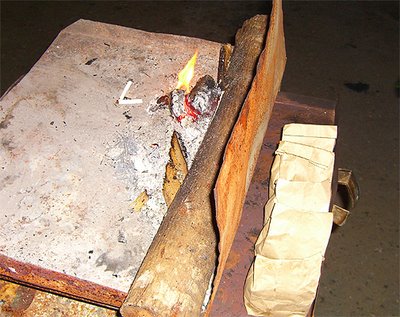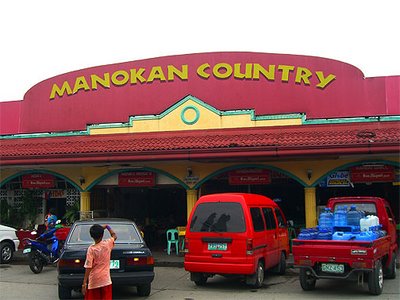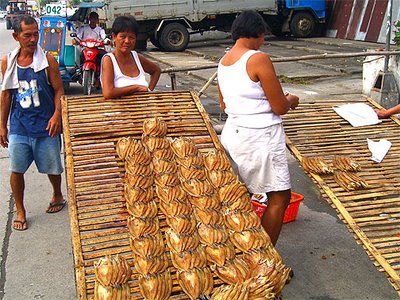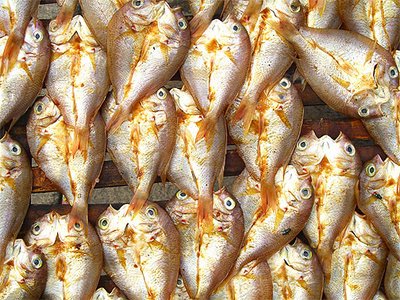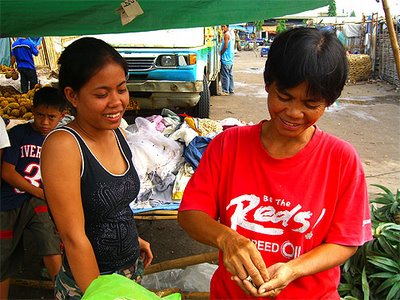
B.C., who just returned from a trip to the Western Visayas, gifted me with some of the best things one can possibly ask in life. Ha ha, that was pure exaggeration, of course, but being Davao born, there is no way I'd turn down anything that has to do with the king of all fruits - the durian. But these durian products come with a clincher - they come from Negros Occidental, home to the majestic Mount Kanlaon. These products are from the farms of the Eduardo Cojuangco Jr., Hacienda Candelaria (which is racked by labor issues and exploitation, but that's another story) and produced by Reliance Core, Inc. in the town of San Enrique.

Durian in a bottle. Now, there's no more reason not to bring this king of fruits anywhere now that the smell has been hermetically sealed in a easy-to-carry bottle. For the longest time, the actual fruit has been banned in public vehicles and hotels.

Durian in a bottle. Now, there's no more reason not to bring this king of fruits anywhere now that the smell has been hermetically sealed in a easy-to-carry bottle. For the longest time, the actual fruit has been banned in public vehicles and hotels.

O.M.G. I have always been a fan of durian. We used to have durian every now and then when it was in season during my childhood days in Davao. The air then would be filled with the characteristic pungency that has made durian both loved and hated by many Filipinos. The newest variety, a mix of the Davao and Thai varieties, already has no smell but has the same great taste. I still prefer the Davao variety because although it is not as meaty as its Thai counterpart, it tastes so much better. As for this bottled version, try not to use it as bread jam. Pointless. Scoop it out and eat it as it is. It's soooo good, I swear.

Chips galore. For those who want to eat durian but cannot afford to lug around the bottle, there's the chips version. I can only imagine how many seeds it took to make one bag of chips considering that the meat isn't that much.

These have faint nutty tones and the durian flavor is just somewhat subtle. If blindfolded, you wouldn't guess you're eating dried durian fruit.
ECJ Farms
Reliance Core Co., Inc.
Hacienda Candelaria, San Enrique
Negros Occidental
Tel. Nos. (034) 460.3186




